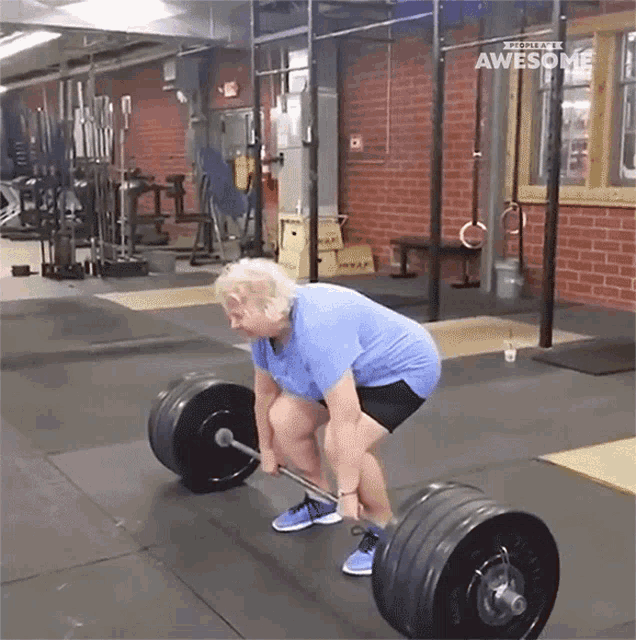A reader recently sent me a great question:
“I always wonder if I push hard enough during strength training. My goals are to build strength and muscles – and not to be a fragile old lady.”
This kind of question is more common than you might think! It is something that almost everyone wonders at some point: “How difficult should I work when I lift?”
Let’s break it down.
✅ 1. Do your muscles feel used during and after your training?
You don’t have to destroy yourself to make progress, but you should have to The feeling that your muscles have done meaningful work.
That can appear as:
- Feeling tension and “working” in your muscles while lifting
- Feeling the weight starts to slow down unintentionally when you are tired in the middle of your set
- A light muscle “pump” after training
- Mild muscle pain the next day (but nothing brutal)
- The feeling that you challenged yourself at the end of each set
If you end your training and feel that you could do the whole thing again immediately … That can be a sign, it is time to increase repetitions, weight or sets.

✅ 2. What kind of pain do you get (if present)?
Contrary to what is often thought, pain is not the only sign of progressBut it can give us instructions.
This is what I am looking for:
- Mild pain 1-2 days? Great! You probably get enough work.
- Extreme pain That takes 4-5 days or more? That’s too much. Choose it back.
- Never painful? It might be time to push things more intentionally or to change exercises.
Again, pain is one signalNo score card. It is not something to chase, whatever happens, but it is another piece of the puzzle to understand what works and does not work for you. 😃
✅ 3. Do you see progression over time?
Strength training is about challenging your body and then gradually increases that challenge over time.
- Do you lift heavier weights than 4-6 weeks ago?
- Do you do more repetitions or more sets with the same weight?
- Do your movements feel more stable, more confident or controlled?
If the answer is yes, you become stronger. And that is exactly what we want.
If not, it might be time to switch to a more structured plan, such as a Periodief program That gradually increases the volume (sets and repetitions) or intensity (amount of weight lifted) for 6-12 weeks.
Note: As we get older, we naturally lose a certain amount of muscles and strength. This is completely normal! However, we can help that loss to reduce smart strength training.
Although you may lift less in your 70s than in the 1930s, you can still move forward within a training program to gradually increase the challenge. The principle of progressive overload is still applicable, you simply adjust your starting point to everything your body can currently. 💪


🧪 Do you want to test your strength in a safe way?
Another way to check if you work hard enough?
Try what I call a LACKMOS SET.
Here is how it works:
- Choose an exercise You have done the consistently IS-like such as body weight squats, push-ups, dumbbell rows or a machine pers.
- Do a solid warming. Let your body move and your joints feel good.
- Then go out completely: Do as many quality representatives as possible with good shape. Stop if you know that you cannot complete another clean representative.
This is the easiest (and safest) with:
- Machines (you have already flown “))
- Body weight movements (you can simply stop without risk)
Less ideal:
- Free weight movements such as Barbell Back Squats of Heavy Bench Press (unless you have a spotter and a lot of experience)
What are we looking for?
Compare your Lakmus set with your usual work sets.
Example:
- If you usually do that 3 sets of 10 representatives and your lax set picks you up 12–13 repetitionsYou are right in that sweet place within a few failing repetitions.
- If you hit 20+ repetitionsOn the other hand, you leave 10+ repetitions in the tank during your normal training sessions. That means it’s time to increase the weight or repetitions to continue.
Most muscle building happens when you are inside 1–4 Failing representatives On a work set. But if you don’t know what failure feel Like, it’s easy to stop short.
A Lakmusset helps to calibrate your efforts again and builds the confidence that you can push harder (safely) when it makes sense.
💡 The Bottom Line
You don’t have to crush yourself to become stronger. But you Doing wants your training courses to be goal -oriented and challenging enough to demand your body to adapt.
Search for:
- Muscle tension (during the set)
- Muscle fatigue (after your training)
- Mild pain (especially at the start of a new training program)
- Progress over time (repetitions, weight, technology)
- … and occasionally a litmoes for clarity
And if you don’t see it? Let’s adjust your approach and help you find that Sweet Spot.
And remember! If you ask this question, it means that you are already training what is great!
You have this.
– Coach Matt PS needs help finding the next step to make progress in your training sessions? Send me an e -mail and I will see how I can help! 💪
